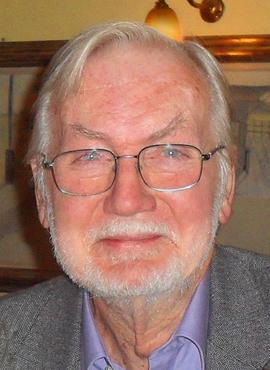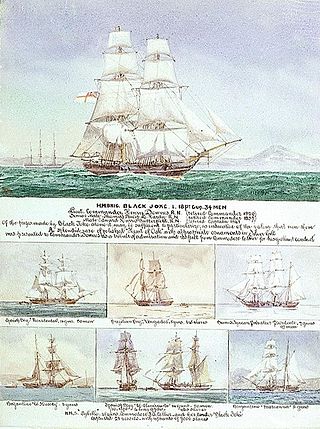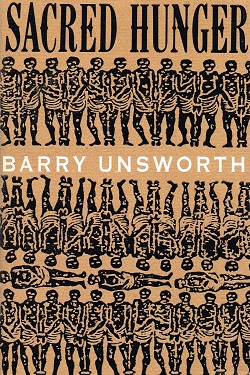
The Atlantic slave trade or transatlantic slave trade involved the transportation by slave traders of enslaved African people, mainly to the Americas. The outfitted European slave ships of the slave trade regularly used the triangular trade route and its Middle Passage, and existed from the 16th to the 19th centuries. The vast majority of those who were transported in the transatlantic slave trade were from Central and West Africa who had been sold by West African slave traders mainly to Portuguese, British, Spanish, Dutch, and French slave traders, while others had been captured directly by the slave traders in coastal raids; European slave traders gathered and imprisoned the enslaved at forts on the African coast and then brought them to the Americas. Except for the Portuguese, European slave traders generally did not participate in the raids because life expectancy for Europeans in sub-Saharan Africa was less than one year during the period of the slave trade.

The Middle Passage was the stage of the Atlantic slave trade in which millions of enslaved Africans were transported to the Americas as part of the triangular slave trade. Ships departed Europe for African markets with manufactured goods, which were then traded for slaves with rulers of African states and other African slave traders. Slave ships transported the slaves across the Atlantic. The proceeds from selling slaves were then used to buy products such as furs and hides, tobacco, sugar, rum, and raw materials, which would be transported back to Europe to complete the triangle.

Barry Unsworth FRSL was an English writer known for his historical fiction. He published 17 novels, and was shortlisted for the Booker Prize three times, winning once for the 1992 novel Sacred Hunger.

The West Africa Squadron, also known as the Preventative Squadron, was a squadron of the British Royal Navy whose goal was to suppress the Atlantic slave trade by patrolling the coast of West Africa. Formed in 1808 after the British Parliament passed the Slave Trade Act 1807 and based out of Portsmouth, England, it remained an independent command until 1856 and then again from 1866 to 1867.

Moses Brown was an American abolitionist and industrialist from New England who funded the design and construction of some of the first factories for spinning machines during the American industrial revolution, including the Slater Mill which was the first modern factory in America.

Slave ships were large cargo ships specially built or converted from the 17th to the 19th century for transporting slaves. Such ships were also known as "Guineamen" because the trade involved human trafficking to and from the Guinea coast in West Africa.
Sylviane Anna Diouf is a historian and curator of the African diaspora. She is a visiting scholar at the Center for the Study of Slavery and Justice at Brown University and a member of the Scientific Committee of the International Coalition of Sites of Conscience. Her contribution as a social historian, she stressed, "May be the uncovering of essential stories and topics that were overlooked or negated, but which actually offer new insights into the experience of the African Diaspora. A scholar said my work re-shapes and re-directs our understanding of this history; it shifts our attention, corrects the historical record, and reveals hidden and forgotten voices."

Sacred Hunger is a historical novel by Barry Unsworth first published in 1992. It shared the Booker Prize that year with Michael Ondaatje's The English Patient.
The Kingdom of Whydah ( known locally as; Glexwe / Glehoue, but also known and spelt in old literature as; Hueda, Whidah,Ajuda, Ouidah, Whidaw,Juida, and Juda was a kingdom on the coast of West Africa in what is now Benin. It was a major slave trading area which exported more than one million Africans to the United States, the Caribbean and Brazil before closing its trade in the 1860s. In 1700, it had a coastline of around 16 kilometres ; under King Haffon, this was expanded to 64 km, and stretching 40 km inland.

Haffon (1695–1727) was the last ruler of the Kingdom of Whydah before it was captured by the forces of Dahomey in 1727.
Reynaud Des Marchais, Chevalier des Marchais was a French cartographer, navigator, and captain of a slave ship who travelled extensively in the west coast of Africa, the West Indies and the northwest coast of South America between 1704 and 1727, under service to the King of France. His maps and manuscripts were published posthumously by Père J. B. Labat in Amsterdam in 1730–31.

The Cod Fisheries: The History of an International Economy is a 1940 book by Harold Innis.

The Book of Negroes is a 2007 novel from Canadian writer Lawrence Hill. In the United States, Australia and New Zealand, the novel was published under the title Someone Knows My Name.
William Smith was an English surveyor employed by the Royal African Company (RAC) in 1726 to survey their castles in West Africa. The RAC dispatched him in response to reports of their castles deteriorating conditions and low personnel numbers. His account of the trip, A new voyage to Guinea, was published posthumously in 1744, with a second edition being published in 1745. The full title of his book was A new voyage to Guinea: describing the customs, manners, soil, manual arts, agriculture, trade, employments, languages, ranks of distinction climate, habits, buildings, education, habitations, diversions, marriages, and whatever else is memorable among the inhabitants. In the book, Smith gave an account of several locations in West Africa, including Fort Tantumquery and Fort Winneba.
The J. Russell Major Prize is an annual prize given to a historian by the American Historical Association for the best book in English about French history.
Robert W. Harms is an American historian and Henry J. Heinz Professor of History & African Studies at Yale University. He is a winner of the J. Russell Major Prize.
Nile was built in Spain in 1786 and was taken in prize. She first appears in readily accessible British records in 1800. She made three voyages as a slave ship, foundering on her third after having disembarked her slaves.
Diligence or Diligent was launched in Spain in 1795 and came into British ownership as a French prize acquired in 1800. She became a slave ship in the triangular trade in enslaved people. She made three complete voyages transporting captives. During her third voyage she captured three French vessels. She was wrecked in 1804 on her fourth journey before she had embarked any slaves.
Several vessels have been named Diligence:










